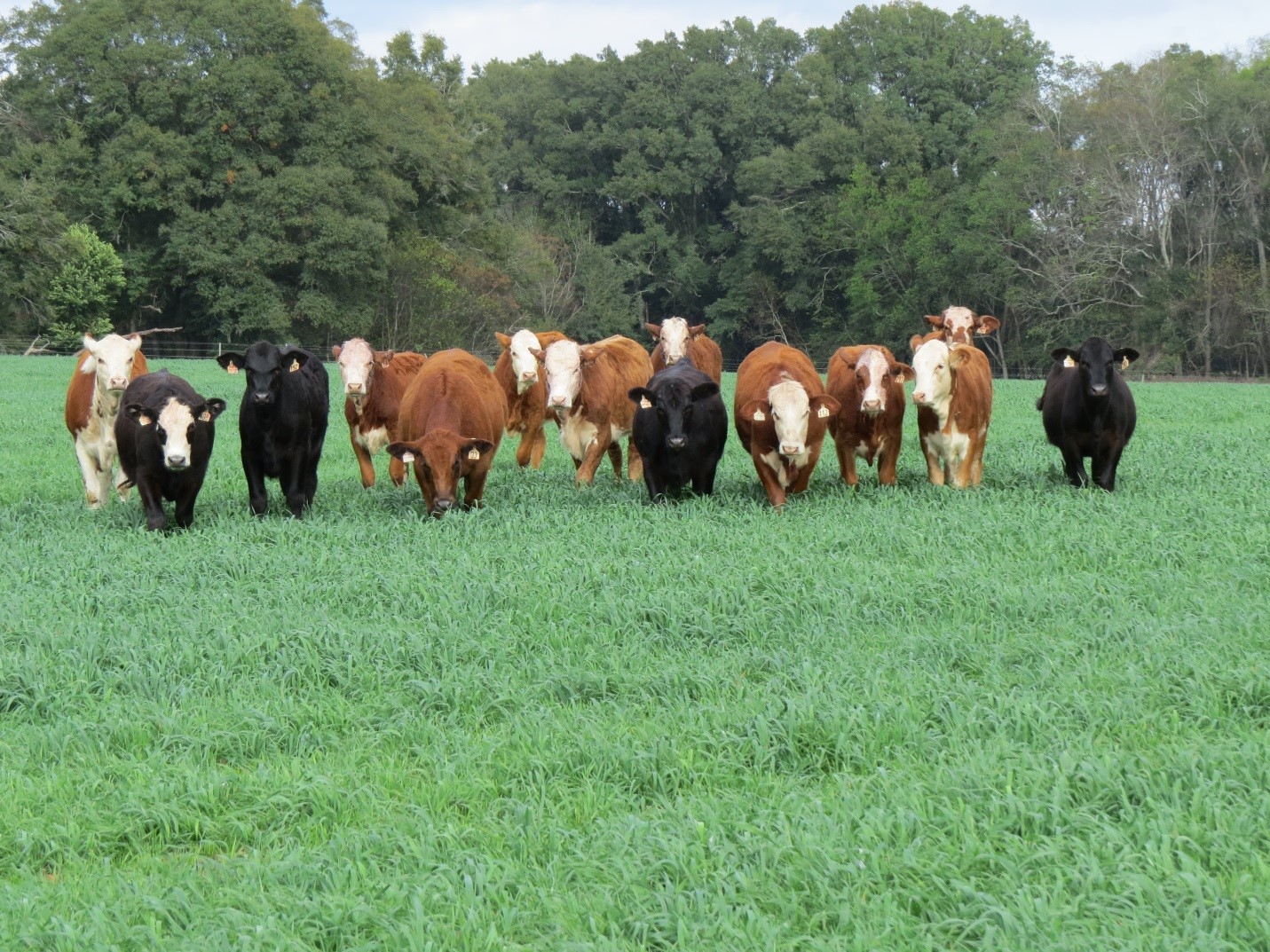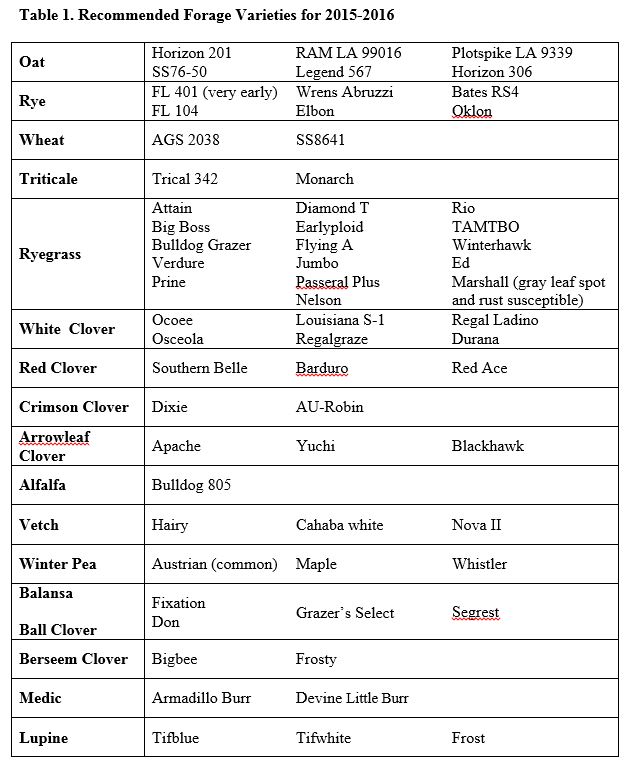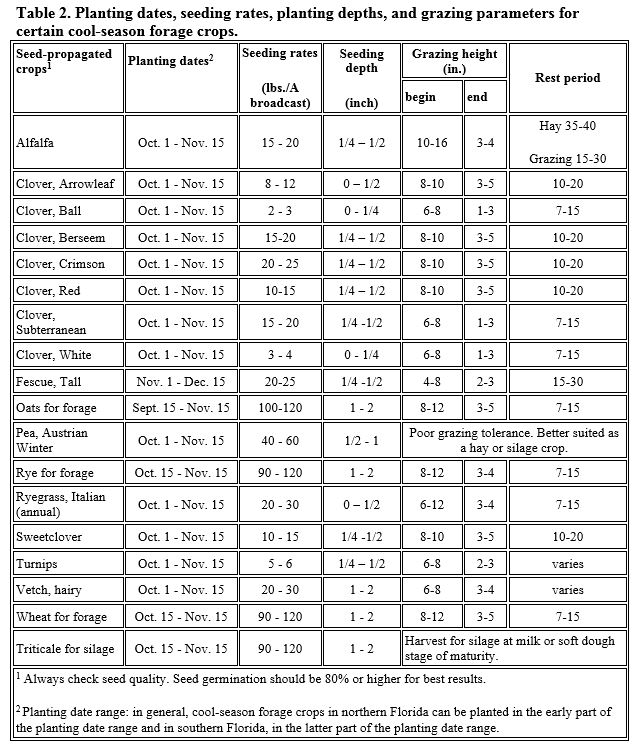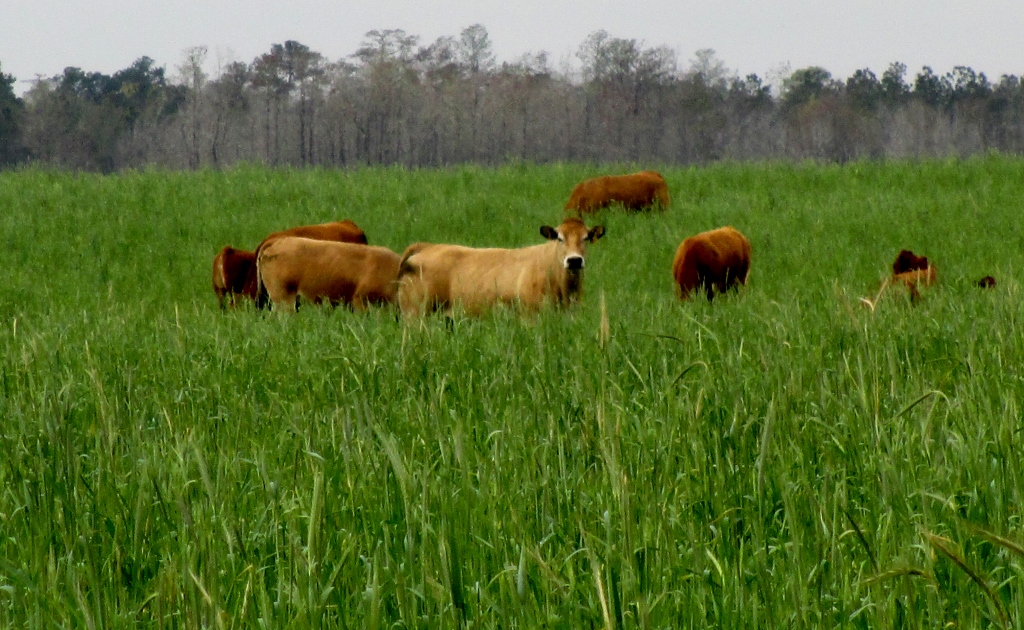
Replacement heifers on cool-season forages; North Florida Research and Education Center (NFREC), Marianna – FL. Photo by Jose Dubeux on Dec. 6, 2013.
Ann Blount, Patricio Munoz, Jose Dubeux, Joao Vendramini, Ali Babar, Kevin Kenworthy, and Ken Quesenberry (North Florida Research and Education Center, Department of Agronomy, and the Range Cattle Research and Education Center)
The 2015 cool-season forage line-up is ready to share with our Florida forage producers. An abundance of rain last spring caused significant problems with seed set and grain harvest for cereal rye, triticale and oat that were locally grown. Cereal rye and triticale, in particular, may be in short supply this planting season. At the present time, only Tricale 342 and Monarch triticale are recommended. Last year we tested several triticale varieties sold in the state that were not adapted to Florida and they were not productive.
The oat crop was somewhat hampered, but there should be an adequate seed supply on the market If rye or triticale seed is unavailable, oat will be a viable substitute. Remember that there is a new strain of crown rust that attacks most of our eastern oat varieties. A later planting date and grazing should minimize the problem, or consider combining oats with ryegrass in a mixture to spread the risk. The new crown rust resistant Legend 567 will be on the market this fall and seed for RAM Oat (LA99016), Horizon 201 and Horizon 306 should be available. If oat is grown for silage or seed, be prepared to spray with a legal fungicide to protect the crop from a crown rust outbreak.
Seed of ryegrass, clovers, vetch and winterpeas should be in plentiful supply. However, we suggest that operations depending on planting cool-season forages request their needs quickly to secure their seed so as to have it available at planting time.
As in most years, moisture is the key to successful fall forage plantings. Our current predictions are for sufficient rainfall during our fall planting window, which generally starts in mid-September through mid-November.
Recommended varieties for planting this fall are listed in Table 1. While there may be other suitable varieties, our recommendations are based on multi-location, multi-year testing under our Florida growing conditions.

The use of trade names in this publication is solely for the purpose of providing specific information. UF/IFAS does not guarantee or warranty the products named, and references to them in this publication does not signify our approval to the exclusion of other products of suitable composition.
We suggest a seeding rate of 90 to 120 lbs per acre for all small grains. If planting a mixture, you should adjust the seeding rate for each component to half of the recommended rate. If you plant late in the season, use the higher end of the recommended seeding rates for each forage. Additional information to help you with seeding rates, planting depth and grazing or hay recommendations are found in Table 2.
Other things to consider:
- If pastures are not irrigated there is risk involved with planting cool-season forages. Conserved forage or supplements may be the better option.
- If you do plant winter grazing on non-irrigated land, remember that small grains are more drought tolerant than ryegrass.
- When planting ryegrass either in a mixture with small grains or alone, plant on wetter sites. Ryegrass needs good moisture for establishment and growth.
- Vetch and winter peas are fairly drought tolerant. Clovers, however, prefer good moisture for germination and establishment. There is some variation in site suitability for clovers. While, white clovers prefer wetter sites, crimson, red, arrowleaf, and ball are more tolerant of well-drained soils
If you should have questions about planting cool-season forages please contact your local UF-IFAS county agent. An updated and complete version of the 2015-2016 Cool-Season Forage Variety Recommendations will be available on-line shortly at http://edis.ifas.ufl.edu
Download a printer friendly PDF version of this article:
2015 Fall Forage Update
 For more information related to this article:
For more information related to this article:
Cool Season Forage Planting Decisions
Alabama Planting Guide for Forage Grasses ANR-0149
Alabama Planting Guide for Forage Legumes ANR-0150
UGA Georgia Forages: Grass Species
UGA Georgia Forages: Legume Species
- Cool-Season Forages – A Pasture Perspective for 2022 - September 16, 2022
- Ornamental Rhizoma Perennial Peanut for Groundcover or Alternative Turf - March 18, 2022
- 2021 Cool-Season Forage Recommendations for Livestock and Wildlife - September 24, 2021
